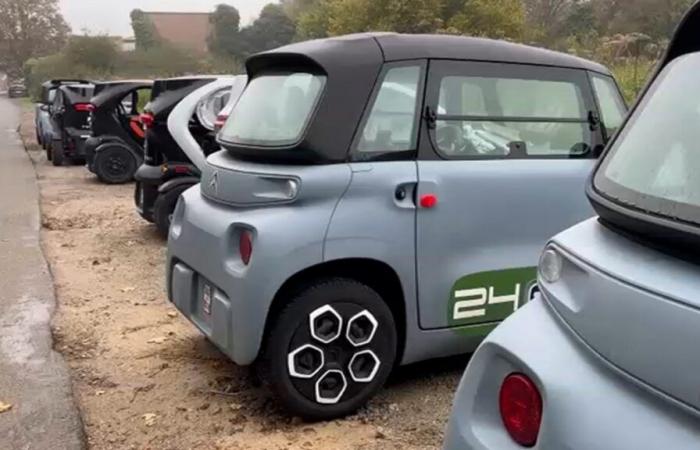Be careful if you want to opt for a car without a license: the risk of being seriously injured is six times higher than for occupants of a conventional car.
They are small, handy and pretty, license-free cars are practical in everyday life. Around 13,000 carts are in circulation on our roads. The main audience for these cars is quite elderly and uses them for short trips, such as going shopping.
But, in Waterloo, they invade the streets and… the parking lots of secondary schools. “It’s a way to be independent, to move around without the help of my parents“, explains a young person to us. “I generally go four to five times a week to hockey, then to my grandmother’s house, to my friends’ houses.“, another young driver told us.
However, these young people, like their elders, are exposed to greater risks. In 2023, there will be 69 accidents involving these unlicensed cars and they are often more serious. According to an analysis by the VIAS institute, the risk of being seriously injured is 6 times higher for users of a “car” than for occupants of a conventional car.
In particular: the lack of equipment. “Often, they are not equipped with minimum safety equipment, such as ABS (Anti-lock Braking System, editor’s note) or airbags.“, alerts Benoit Godart, spokesperson for the VIAS institute. “Almost one accident in six involving these carts involves a loss of control against an obstacle. It’s all the more paradoxical since, ultimately, these carts don’t drive fast“, he notes.
These cars are limited to 45 km per hour. By not driving fast, users feel safe and do more things. “They wear seat belts less, probably because they do not feel the formal obligation to do so. However, it is obligatory. They circulate, mainly, in zones 30 in urban areas and tell themselves that they do not feel in danger“, deplores Benoit Godart. The spokesperson also adds that “in one in ten accidents, the driver is under the influence of alcohol“.
The VIAS institute recommends 5 things: a distinctive sign (such as a 50km/h sticker on the rear of the vehicle), regular technical inspection, awareness towards users, basic safety equipment such as ABS and airbags, and finally approval rules specific to these vehicles, because the bodywork of these cars is not subject to rigorous approval.
Cars without a license VIAS institute mobility accident on the roads






